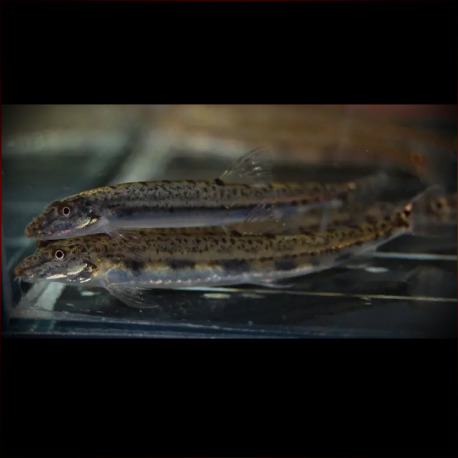More info
Datasheet
| Minimum Tank Size | 60 litres / 15.85 US gallons |
| Maximum Size | 7.5cm / 2.95inches |
| Temperature | 20°C / 68.00°F - 24°C / 75.20°F |
| Hardness | 1.01dgH / 18ppm - 5.04dgH / 90ppm |
| pH | 5.5-7.0 |
General Description
Acanthopsoides, commonly known as dwarf horse-face loaches, are peaceful freshwater fish closely related to horse-faced loaches of the Acantopsis genus. They are characterized by a slender body, small eyes, and distinctive dark markings on their fins. The genus comprises five species, with A. robertsi easily identified by a dark triangular marking in the caudal fin and unique dorsal patterns. These fish are challenging to differentiate, and their identification often poses difficulties.
Aquarium Setup
For optimal housing, Acanthopsoides require soft, sandy substrates as they tend to burrow. Coarser gravel can stress them and hinder natural digging behaviors. Tank decor should include rocks, driftwood, and leaf litter to create hiding spots and shaded areas. Lighting can be dim, and high flow rates should be avoided to mimic their sluggish river habitat. Care should be taken to prevent small fish from entering filter intakes and ensure secure tank covering since loaches are known to jump.
Behaviour
Acanthopsoides are peaceful towards tankmates and prefer living in groups of six or more. They thrive alongside small, schooling cyprinids and sand-dwelling loaches, although territorial or aggressive individuals should be avoided. Presence of upper water column fishes reduces timidity in Acanthopsoides, mimicking natural safety indicators.
Feeding and Diet
These loaches feed on insect larvae, small crustaceans, and similar organisms sifted from substrate mouthfuls. A varied diet of sinking dried foods, live, and frozen options like Artemia, Tubifex, Daphnia, and bloodworms is ideal for their nutrition.
Reproduction & Dimorphism
Acanthopsoides have not been extensively bred in aquaria, but successful spawning has been reported in controlled environments. Males exhibit enlarged pectoral fins with breeding tubercles, while females are typically larger and heavier-bodied.
Habitat and Distribution
Native to the Kapuas River basin in Kalimantan Barat, Indonesian Borneo, Acanthopsoides inhabit clear, flowing river channels with sand, gravel, or mud substrates. They coexist with Betta lehi and Nemacheilus saravacensis, often experiencing seasonal changes in water conditions. Similar-looking species have been found in other regions bordering Malaysian Borneo, like the Kayan and Sambas river basins.

